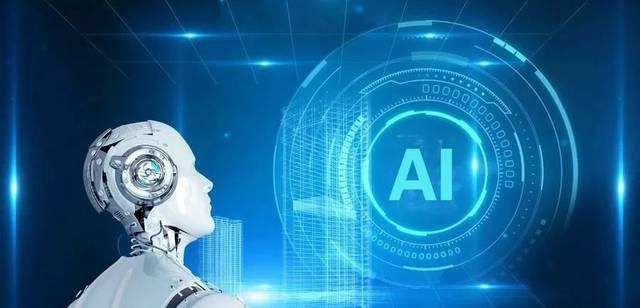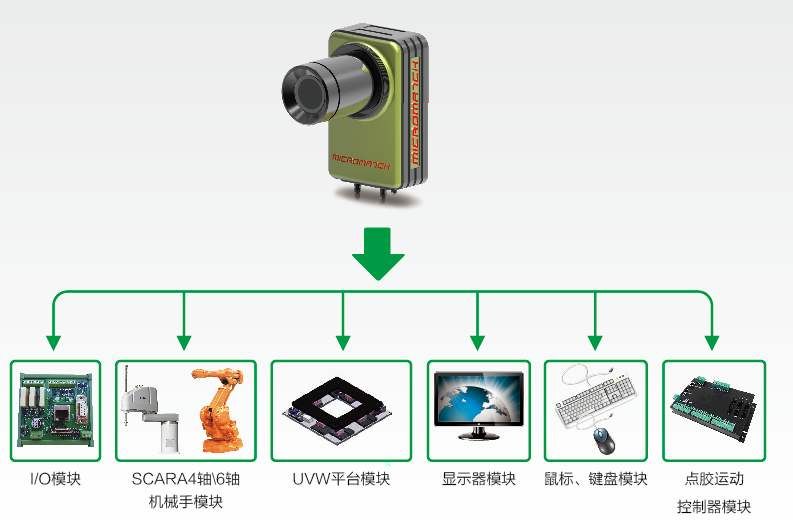Intelligent manufacturing in 2020 is inseparable from machine vision!
In recent years, with the advancement of related technologies, my country's manufacturing industry has gradually penetrated into high-end and complex fields such as assembly and testing. The 3C industry has a strong coverage scale and will become a new growth point for current intelligent manufacturing.
Smart manufacturing is a new production model that will use a variety of advanced technologies, such as robots, artificial intelligence, the Internet of Things, big data, etc., to further achieve efficient, energy-saving and flexible factories. Among them, machine vision is an extremely critical technology towards advanced manufacturing.
1. The principle and function of machine vision
Computer vision is a technology that uses machines to replace human eyes for measurement and judgment. The main principle is to convert the captured target into an image signal through a camera product (i.e., image capture device), and then transmit it to a dedicated image processing system. The system converts it into a digital signal based on pixel distribution, brightness, color and other information. In order to analyze the formation of the photographed target.
As a major branch of computer vision, industrial vision pays more attention to the application of generalized image signals (lasers, cameras) and automated control (production lines). Compared with the human eye, industrial vision has higher accuracy, objectivity, repeatability, There are obvious advantages in cost and efficiency.
Machine vision is a comprehensive technology, including image processing, mechanical engineering technology, control, electric light source lighting, optical imaging, sensors, analog and digital video technology, computer software and hardware technology (image enhancement and analysis algorithms, image cards, I/O card, etc.). A typical machine vision application system includes image capture, light source system, image digitization module, digital image processing module, intelligent judgment and decision-making module and mechanical control execution module.
The most basic feature of the machine vision system is to improve the flexibility and automation of production. In some dangerous working environments that are not suitable for manual work or situations where artificial vision cannot meet the requirements, machine vision is often used to replace artificial vision. At the same time, in large-volume repetitive industrial production processes, the use of machine vision inspection methods can greatly improve the efficiency and automation of production.
Industrial vision can be used to detect product surface information, non-contactly measure product appearance dimensions, determine object position coordinates, and identify and determine the color, shape and other characteristics of objects. From the perspective of application technology, industrial vision can not only cooperate with robots to realize sorting, assembly, printing and other processes, but also perform detection and measurement of high-performance and precision components. The latter requires higher precision, but it is also precisely What is difficult for the human eye to achieve, the demand is greater. Industrial vision is equivalent to giving a pair of eyes to the production process, making manufacturing intelligent and opening up a new "horizon" of intelligent manufacturing.

2. The applications of machine vision mainly include detection and robot vision.
(1) Detection: It can be divided into high-precision quantitative detection (such as cell classification of micrographs, size and position measurement of mechanical parts) and qualitative or semi-quantitative detection without measuring instruments (such as product appearance inspection, assembly line inspection, etc.) Parts identification and positioning, defect detection and assembly completeness detection).
(2) Robot vision: used to guide the operation and action of the robot in a large range, such as picking workpieces from the messy pile of workpieces sent by the hopper and placing them on the conveyor belt or other equipment in a certain orientation (that is, the problem of hopper picking ). As for operations and actions within a small range, tactile sensing technology is also needed.
3. The demand for machine vision is soaring, and it may become a blue ocean market.
Represented by smartphones, new products such as full screens, fingerprint recognition, iris recognition, and flexible screens, as well as the entire electronics manufacturing field, have also proposed unprecedented precision standards for machine vision. In order to cope with the endless new application requirements, the design of industrial cameras has also seen new development directions. From this point of view, Industry 4.0 is inseparable from intelligent manufacturing, and intelligent manufacturing is inseparable from machine vision. Machine vision is a necessary means to achieve industrial automation and intelligence, and it is also an extension of human vision on machines.
For a long time, the road to intelligentization of my country's robot industry has been troubled by machine vision problems. For a long time in the past, this core technology has been mastered by the United States, Japan and other countries. Compared with foreign countries, domestic machine vision technology is still relatively backward, and key technical equipment still relies on imports.

4. The development of global machine vision technology is becoming more and more mature
The development of machine vision technology originated in the mid-1960s. It was proposed and started to be studied by American scholar Roberts. By the 1970s, machine vision had formed several important research branches. It was not until the 1980s and 1990s that machine vision came into being. After the 21st century, machine vision technology entered a mature stage.
As some foreign products with high value in the core software and hardware are relatively strong, domestic manufacturers are catching up, but there is still a big gap. The cost of core software and hardware accounts for 80% of the total cost of industrial vision. Foreign companies rely on their profound R&D background and technical advantages to seize most of the market and generally enjoy high profits. Especially in the most expensive industrial cameras, industrial lenses, and image processing software, foreign products still have considerable advantages.
As the "eyes" of industrial automation, machine vision can be called the "window of the soul". Machine vision technology is inseparable from object barcode identification and picking, product quality inspection, appearance size measurement, transmission equipment tracking and positioning, etc. Therefore, with the development of intelligent manufacturing, robot vision has also ushered in new application requirements. According to public data, in 2018, the global market for machine vision technology in the field of industrial automation reached 4.44 billion US dollars, and it is expected to reach 12.29 billion US dollars in 2023, with a compound annual growth rate of 21%.
5. The Chinese market of machine vision continues to expand, and the growth rate is higher than the global level
my country's machine vision started late, but due to the wide application and rapid development of downstream industries in my country, China has become one of the most active regions in the world for machine vision development. The scope of application covers industry, agriculture, medicine, military , aerospace, meteorology, astronomy, scientific research and other industries of the national economy. The important reason is that China has become the processing center of the global manufacturing industry. The high-demand parts processing and its corresponding advanced production lines have brought many international advanced machine vision systems and applications into China. After a long period of dormancy, China's machine vision has ushered in explosive growth. Data show that the scale of China's machine vision has reached 7 billion.
In short, the current development of intelligent manufacturing is in full swing, bringing continuous momentum to society. Both "Made in China 2025" and "Industry 4.0" are inseparable from intelligent manufacturing and machine vision, and machine vision technology will continue to develop and progress as the "eye of wisdom" in the field of intelligent manufacturing. The future will surely shine.
Proposal recommendation
- TOP



